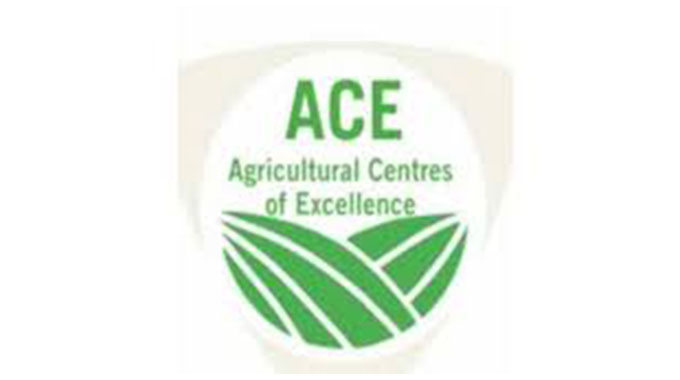
The Sunday News

Judith Phiri, Business Reporter
There have been growing calls for farmers to consider investing in post-harvest cooling infrastructure in order to meet food safety and quality standards.
Farmers have had to throw away their produce or let crops rot in the fields as most cannot afford to harvest if there is no market or if they do not have the proper storage facilities.
Statistics have shown that over a third of the food grown by farmers never gets to the table and goes to food waste, with Africa said to be losing 30 to 50 percent of its food to post-harvest food losses.
Green Afrique Technologies’ chief executive officer (CEO), Mr Anglistone Sibanda said post-harvest cooling infrastructure plays a critical role in ensuring food quality and enabling food safety.

Mr Anglistone Sibanda
“Particularly for fresh fruits and vegetables, farmers have to maintain them in good quality for a longer period. Farmers who are into horticulture and other perishable foods like poultry, fisheries and beef need to invest in cold chain facilities.
“It’s extremely important to avoid losses and also compromise on health and food safety standards. Without a cold chain, farmers find themselves having to rush with their produce to markets even when it’s not ideal because they run the risk of losing out,” he said.
The global cold chain logistics market was valued at US$202,17 billion in 2020, and, with increasing needs to extend marketing periods of fresh produce, is projected to reach US$782,27 billion by 2030.
In addition to providing quality and safe products to consumers, cold supply chain logistics largely contribute to the economy and workforce.
Mr Sibanda said for farmers targeting export markets, there was no way they could not consider investing in post-harvest handling without a cold chain.

“For example, flowers need to be kept in cool temperatures so that when they burst, they burst at the right time, while fruits like passion fruit need to be kept in cool temperatures to avoid shrinking before they get to the market.
“The inhibiting factor has been the high cost of installation, the erratic electricity supply, exacerbated by the lack of funding, hence we urge the banks, especially those that are handling the Government horticulture funds to also consider financing the post-harvest capital projects.
“These projects could be cold chain because they’re part and parcel of the horticulture value chain, without which farmers make losses. So, funding the post-harvesting infrastructure will enhance the profitability of the agribusiness venture.”
According to the country’s trade development and promotion agency, ZimTrade, biological processes impact the quality and are responsible for the deterioration process of fresh fruits and vegetables.
“Biological factors include rate of respiration, sprouting, rooting, changes in colour, changes in flavour, changes in texture, changes in nutrition, ethylene production, water loss and pathological deterioration.

Zimtrade
“While biological processes are innate to fresh fruits and vegetables, the rate of biological processes is affected by environmental factors such as relative humidity, temperature, velocity of the air, and composition of gases in the atmosphere.”
ZimTrade also noted that post-harvest cooling for fresh fruits and vegetables by exporting famers rapidly removes field heat from freshly harvested commodities before shipment, storage or processing and is essential for many perishable crops.
“Post-harvest cooling can suppress enzymatic degradation and respiratory activity (softening), slow or inhibit water loss (wilting) and slow or inhibit the growth of decay-producing microorganisms (moulds and bacteria). It can also reduce production of ethylene (a ripening agent) or minimise the product’s reaction to ethylene.”
Among other key benefits of post-harvest cooling, the trade development and promotion agency said it assists farmers to meet food safety and quality export standards as it simplifies traceability, enhances quality control and assurance.
ZimTrade said post-harvest cooled produce was easy to break into exports by meeting market requirements, while reducing post-harvest losses while increasing capacity for exports.

Fresh fruits and vegetables
In terms of selecting the best cooling methods for exports, the trade development and promotion agency said: “Farmers need to
be aware of the nature of the product. Different types of produce have different cooling requirements. For example, strawberries and broccoli require near-freezing temperatures, whereas summer squash or tomatoes would be damaged by such low temperatures.”
ZimTrade said product packaging requirements were also important as the best choice of cooling method may depend on whether the produce is in a box, bin, or bag as requested by the importer or buyer.
It said that the package design can influence the method and rate of cooling, as well as product flow capacity as some methods of cooling are much faster than others.
“If the volume of produce to be cooled per season, per day, or per hour is large, it may be necessary to use a faster cooling method than would be used for lower volumes.
“Economic constraints also play a major part as construction and operating costs vary among cooling methods used by many farmers in Zimbabwe.”
ZimTrade said the expense of cooling must be justified by higher export prices and other economic benefits, while in some cases, for example, when the volume of produce is low, the more expensive methods can’t be made to pay for themselves.”
In terms of common produce cooling methods, the trade development and promotion agency said room cooling (cold rooms) was simply a matter of placing produce in an insulated room equipped with refrigeration units to chill the air.
It said this method could be used with most commodities but may be too slow for some that require quick cooling, while it was effective for storing precooled produce but in some cases cannot remove field heat rapidly enough and was one of the most used methods in Zimbabwe.
ZimTrade said forced-air cooling (blast room) was used in conjunction with a cooling room and can be used effectively on most packaged produce.
“This is used to increase the cooling rate and additional fans are used to pull cool air through the packages of produce. Although the cooling rate depends on the air temperature and the rate of airflow through the packages, this method is usually 75 to 90 percent faster than room cooling.
“When forced-air cooling fans are added to an existing cooling room, it may be necessary to increase the size of the refrigeration unit to accommodate the additional cooling load.”
Turning to hydro-cooling, ZimTrade said it can be used on most commodities that are not sensitive to wetting as wetting often encourages the growth of microorganisms.

The Agricultural and Rural Development Authority (Arda)
It said in this process, chilled water flows over the produce, rapidly removing heat, while at typical flow rates and temperature differences, water removes heat about 15 times faster than air.
On another key method, which is icing, the trade development and promotion agency said: “Top or liquid icing may be used on a variety of commodities. In the top icing process, crushed ice is added to the container over the top of the produce by hand or machine.”
ZimTrade said icing was particularly effective on dense packages that cannot be cooled with forced air because the ice has a residual effect, this method works well with commodities that have a high respiration rate, such as sweet corn and broccoli.
Agricultural Advisory and Rural Development Services (AARDS)’s principal horticulture specialist in the Ministry of Lands, Agriculture, Fisheries, Water and Rural Development, Mrs Hilda Manditsvara said good post-harvest handling was critical to reducing post-harvest losses of fresh produce.
She said this also maintains quality, preserves nutrient content, earns higher prices at markets, while increasing market access for farmers.

“Facilities that allow aggregation and primary processing activities such as sorting, cleaning, packing and storing the produce in cold storage, allow agribusinesses to offer higher quality produce to retailers on a more stable basis.
“This is often a pre-requisite without which the access to high-value markets is precluded. Therefore, investing in cooling facilities will help to increase the shelf life of the produce and maintain the quality of the produce for a long time. Post-harvest cooling infrastructure will slow down deterioration and maintain quality and safety of the commodities.”
Agriculture is the backbone of Zimbabwe’s economy with 66,2 percent of the population working in the sector and contributing about 5,07 percent to the country’s Gross Domestic Product.



